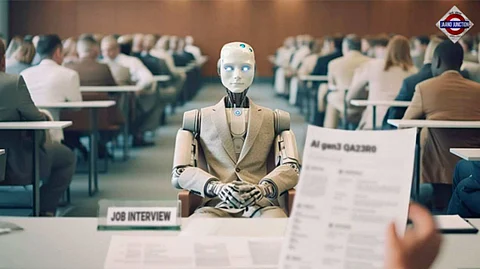

The message from corporate boardrooms has been clear: “AI will support human potential, not replace it.” However, an increasing number of companies are implementing significant workforce changes, often citing efficiency and restructuring, with AI playing a more prominent role. From HR departments to content teams and entry-level tech positions, automation is beginning to change the way work is performed. While AI may not always be the sole reason for these changes, it is becoming a key factor in many transitions, raising concerns about the disparity between what is promised and what is occurring.
IBM recently laid off about 8,000 employees, with many of the job cuts happening in the Human Resources department. The company is using AI to automate routine HR tasks like sorting data and answering common questions, which means fewer people are needed for these roles. Despite these layoffs, IBM says it is still hiring in other areas like software development and sales, shifting focus to where human skills are more valuable alongside technology.
IBM's leaders emphasise that AI is not intended to completely replace employees but rather to assist them in focusing on more meaningful tasks by handling repetitive work. This perspective aligns with a growing trend among various companies, including Duolingo and Google, which are also incorporating AI to enhance efficiency and cut costs. While automation is transforming business operations, many organisations assert that it is designed to support workers rather than replace them entirely.
Duolingo’s recent move to replace many human contractors with AI-driven content creation reflects a broader shift in how companies are using artificial intelligence. CEO Luis von Ahn explained that AI is not just about increasing productivity but about fulfilling the company’s mission to reach more learners quickly. He emphasised that manually creating large amounts of educational content simply isn’t scalable, and AI enables them to deliver new courses at an unprecedented speed, something that would have taken decades otherwise. While Duolingo insists that AI is a tool to support its teams, the reality is that many roles, especially those involving repetitive or scalable tasks, are being automated, resulting in significant layoffs.
While companies often say AI will only help humans and not replace them, the growing number of job cuts connected to AI tells a different story. This contrast between what is said and what happens highlights the challenging reality of AI’s impact on jobs and raises important questions about how work will evolve in the future.
Take Google’s parent company, Alphabet, for example. Despite reporting a 15% revenue boost in late 2024, largely due to AI-powered services, Google has had to cut jobs, especially in cloud operations and internal teams, to fund its massive AI investments. CFO Anat Ashkenazi openly acknowledged deeper budget cuts in 2025 to stay competitive in the AI race, a move that unsettled many employees worried about job security. This trend is echoed worldwide: a World Economic Forum survey found that 41% of companies expect AI to reduce their workforce over the next five years by automating tasks humans once handled.
Microsoft has been vocal about its commitment to AI, but behind the headlines, this shift is leading to significant job cuts. In early 2025, the company laid off around 6,000 employees, many from product development, support, and engineering teams. While Microsoft claims it is streamlining for future growth, many within the company see a different reality: teams that were once deemed essential are being replaced or restructured to prioritise AI initiatives.
CEO Satya Nadella has stated that AI will "enhance productivity," but he also acknowledged that nearly 30% of Microsoft's code is now being written by AI. For employees whose jobs depend on coding, testing, or support, this is an unsettling reality. The underlying message is subtle yet clear: some roles are becoming optional. As Microsoft continues to invest heavily in AI tools like GitHub Copilot and Azure, the human cost of this technological progress is becoming increasingly evident.
As AI quietly takes over tasks once done by humans, and companies issue carefully worded promises, one can’t help but ask: If this isn’t a replacement, then what is?
